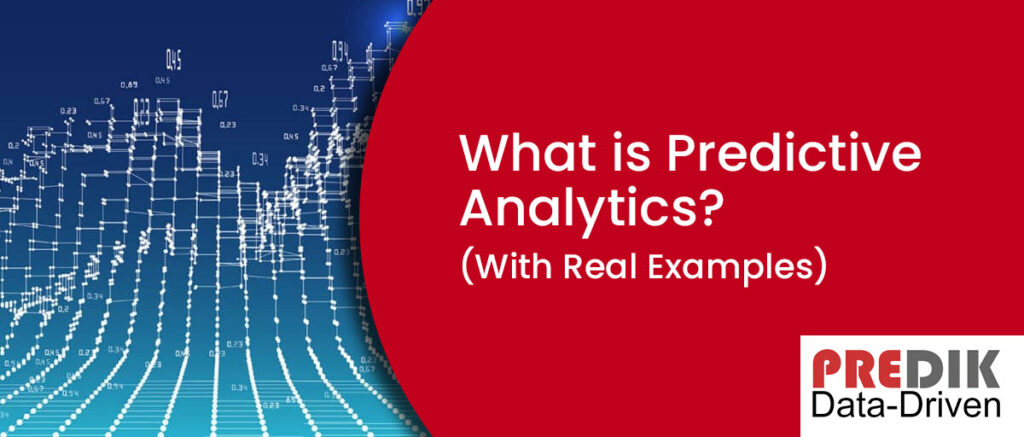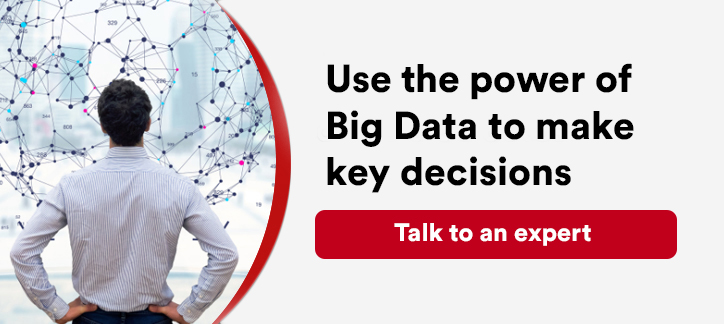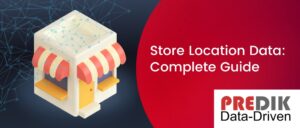Have you ever wondered how certain companies can anticipate customer needs and provide them with tailored solutions? This is where predictive analytics comes into place.
Predictive models help companies identify patterns and trends by analyzing historical and current data. This allows them to make accurate decisions about the organization’s next steps regarding a new strategy, a product launch, or even corrective measures.
But what exactly is it? Predictive Analytics is a methodology that uses statistical algorithms, Machine Learning techniques, and data mining to estimate future outcomes based on data.
How are predictive models different from other analytic models?
There are four main types of advanced analytics models: Descriptive, Diagnostic, Predictive, and Prescriptive.
- Descriptive models summarize the data and give insights into what has happened (What happened).
- Diagnostic models explain the reason things happened (Why it happened?).
- Predictive models estimate the future (What is likey to happen?).
- Prescriptive models suggest the best course of action (What to do to get certain results?).
In our experience, most companies are on a “descriptive” and “diagnostic” stage, so the challenges is to move into a “predictive” stage.
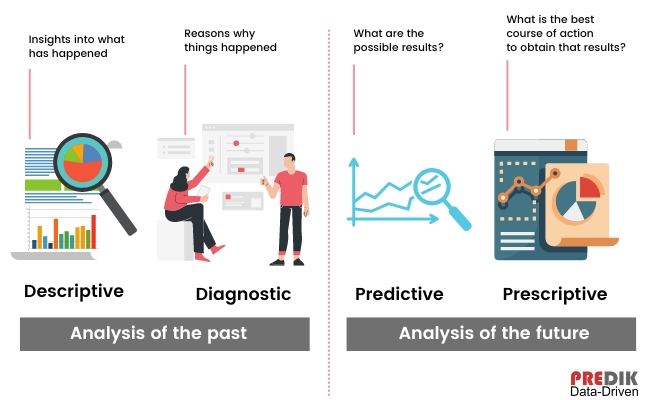
In this guide we will cover the following topics:
- Why is predictive analytics so important?
- Benefits of using predictive analytics for business strategies
- Predictive Analytics Examples: How companies are using it?
- How does predictive analytics work? (Step by step)
- Understanding the different types of Predictive Analytics Models
- Understanding the Predictive Analytics Techniques
- The relationship between Big Data and Predictive Analytics
- The importance of Machine Learning in Predictive Analytics
- Deep Learning: One of the most sophisticated ways of Predictive Analytics
- Conclusions about Predictive Analytics
Why is predictive analytics so important?
Simple, predictive analytics helps companies make better decisions, improve customer satisfaction, and increase profits, among many other benefits.
For example, decision-makers can use predictive models to define the optimal inventory levels or the best alternatives for a marketing campaign.
We recommend you reading: Predictive Analytics In Marketing: Complete Guide + Examples
It’s important to say that predictive analytics (like any other data analytics) is not a crystal ball. Remember: Their results are based on internal and external historical data and can only estimate future outcomes based on the quality of information it has.
However, predictive analytics can still be incredibly valuable for organizations, as it can help identify potential risks and new business opportunities.
“Organizations are turning to predictive analytics to help solve difficult problems and uncover new opportunities.”
SAS
Benefits of using predictive analytics for business strategies
What are the causes of high employee turnover? Why are sales declining? Predictive insights can help companies identify the root cause of such problems and suggest solutions. By using predictive models, decision-makers can take action based on facts and not just gut instincts.
We recommend you reading: Predictive Analytics In Sales: How To Make Your Sales Team Smarter?
But what makes predictive analytics so effective and valuable for companies?
Identifying patterns and trends. First of all, predictive models help identify patterns and trends that are not easily visible in “standard” analysis. This favors better-informed decisions, resulting in improved operational efficiency, higher sales, and increased customer satisfaction.
You may also like to read: Customer Segmentation: How to Do With Predictive Location Intelligence
Reduce risks. They are often used to minimize risks within companies. By analyzing past data, businesses can identify potential risks and take proactive measures to mitigate them.
What is the benefit? Reducing unexpected problems also leads to better performance and productivity.
Saving costs. Predictive models can identify areas to reduce costs, streamline processes, and increase efficiency.
Competitive analysis. Predictive data also provides a competitive advantage. You can gain insights into customer behavior, preferences, and buying patterns using advanced statistical techniques. This lets you understand your customers better and create targeted marketing campaigns that drive sales.
Predictive Analytics Examples: How companies are using it?
Retail
Retailers use predictive analytics to understand and anticipate customer behavior, provide foresight into future sales, and make informed decisions about promotions and marketing strategies.
Retail analytics also plays an essential role in influencing what customers will want to buy and when thereby assisting businesses in catering to their customer’s needs and improving performance and offerings.
According to Oracle, there are different kinds of retail analytics that businesses can use for predictive models, such as:
- Shopper-Level Analytics: It answers questions about how individuals interact with the brand and its products. It includes information on how customers move through a store or website and their behaviors, such as leaving items in or removing items from their cart.
- Transaction-Level Analytics: It focuses on individual transactions, including a purchase (When it happened, through what channel, and what was bought).
- On-Shelf Analytics: It deals with the items themselves, analyzing how fast items sell, what similar items competitors are selling, and for how much.
- Location Analytics: It compares performance in different stores or locations and tracks trends in customer behavior across various regions.
- Outcome-Level Analytics: It analyzes key metrics like sales, profits, and customer loyalty to understand trends.
You may also like to read: Predictive models for retail franchises
Banks & Financial Institutions
Predictive analytics provides financial professionals a powerful tool to gain a competitive edge across multiple areas by accurately forecasting future outcomes.
- Revenue Forecast: By analyzing invoice data, past payment trends, cash position, and other factors, predictive models can forecast the timing of cash inflows and outflows. This allows finance professionals plan their investments better.
- Customer Predictions: These models can help prioritize accounts and customize customer interactions based on their probability of paying by analyzing past trends, financial strength, and market conditions.
- Fraud Detection: Predictive tools can detect and prevent fraud. This is crucial for arear related to risk management like capital investments.
- Credit Evaluation: Models can score customers and assign a risk level they make a transaction. For this, predictive models can consider credit reports and market data.
Healthcare
The healthcare sector is witnessing some important transformations thanks to predictive analytics. From clinical care and administrative department to health insurance companies, the use of predictive data has become widespread within the sector.
- Patient Diagnostics: Predictive models can determine if a patient is susceptible to developing certain medical conditions, such as heart diseases, diabetes, or strokes. To detect these problems, models consider information like EHR data, biometrics, and even patient claims.
- Readmissions: By forecasting patients with high readmission probability, clinicians can adjust their post-hospitalization treatment plans (And save money).
- Supply Chain Management: Hospitals use predictive tools to manage their supply chains better. Making the correct estimations helps managers understand which streamlined purchases and vendor consolidations could save money and provide quicker responses.
Learn more use cases: Predictive Analytics In Healthcare: 4 Examples and Risks
Insurance
The insights derived from predictive insights help insurance companies outline risk levels and analyze any factors influencing policy formulation and underwriting.
- Policy Formulation: Insurers use predictive data to customize policy plans. Companies can use historical data related to customer behavior, price sensitivity, and behavioral patterns. This allows them to adjust premiums more precisely based on market conditions and related risks.
- Fraud Monitoring: Predictive models are being used to identify suspicious user patterns. Also, security teams can track any internal intent of fraud.
- Claims Management: These models help insurers identify unexpected claims before becoming high-cost losses.
You may also like to read: Big Data in Insurance Industry: How Data is Changing The Game
Transportation & Logistics
Predictive tools enhance decision-making, cost reduction, and customer satisfaction in transportation and logistics companies.
Predictive tools enhance decision-making, cost reduction, and customer satisfaction in transportation and logistics companies. With technologies like the Internet of Things (IoT), Big Data, Machine Learning and cloud computing, companies can collect vast data regarding every element of their operations.
- Route Optimization: Transportation companies can use predictive insights to determine the most efficient route plan (Avoiding bottlenecks, for example) and predict shipment arrival times.
- Inventory Optimization: These tools help managers to adjust their inventory levels based on changing demand, traffic patterns, and external issues.
- Reduce costs: Companies like UPS and Maersk use predictive data to optimize to reduce fuel costs. UPS, for example, uses over 1 billion data points to forecast demand and “move” its fleet accordingly.
You may also like to read: Supply chain solutions with predictive analytics
Real Estate
The Real Estate industry has adopted Predictive data solutions for decision-making and optimization of their operations.
- Value Forecasting: Predictive tools are helpful for property value predictions. Predictive models can use commercial real estate data, property listings, economic growth data, and rent price fluctuations.
- Predictive Maintenance: “Predictive maintenance” is not only a concept used for industrial companies. It is also helpful to estimate when a property will need maintenance.
- Opportunity detection: Predictive models are helping Real Estate and Investment firms to detect new buying opportunities based on an area’s growth and development.
Learn more: Predictive Modeling: The New Real Estate Journey
How does predictive analytics work? (Step by step)
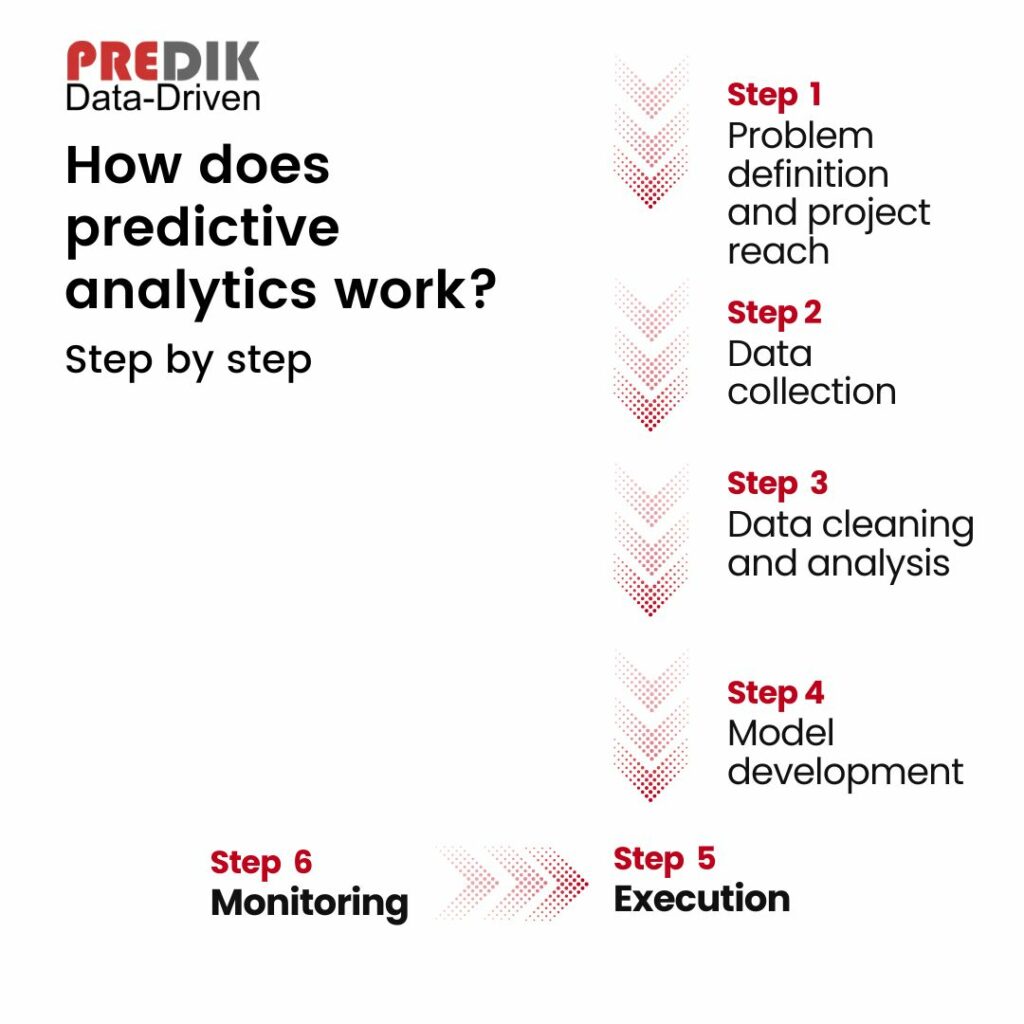
Predictive analytics uses mathematical models to identify relationships between variables to estimate future results To get the best outcomes it is important to extract and analyze data from different sources, including internal, external and alternative data. Some examples can be:
- Sales historical data (Internal data).
- Public records (External data).
- Economic variables (External data).
- Consumer behaviors (Alternative data).
- Foot traffic (Alternative data).
- Customer transactions (Alternative data).
Now, without getting into too much detail, a predictive model should follow these steps:
Problem definition and project reach. The first step is to define the problem that needs to be solved and what the project will cover.
It is crucial to take this first step correctly to ensure we will work towards the right goal and get the desired value from this initiative.
Data collection. As we mentioned, data is the foundation of predictive models. This step requires data mining or data aggregation tools to gather the data. It is important to define the best data sources for the project.
Data cleaning and analysis. Next, we ensure data is ready for analysis. This is where statistical regression methods and Machine Learning techniques are involved.
Predictive model development. Now it is time to build our predictive models. Analysts will generate multiple models and select the most accurate one (This step requires numerous interactions and testings).
Model execution. After selecting the best model, it is time to put it to work. Note: Any predictive model needs specialized training.
Model monitoring. It is important to keep constant monitoring. This step ensures our model’s effectiveness.
Understanding the different types of Predictive Analytics Models
Predictive models classify into different types according to their characteristics.
Statistical Models
These models can understand the relationships between different variables to make predictions based on those relationships. They are widely used because they can handle a large amount of data.
Classification models
As the name suggests, these models classify data into different categories. They can relate data points into categories. Are you using an email spam filter? Well, that is an excellent example of a classification model in action!
Outlier models
Outliers are data points significantly different from the data points in the same dataset. Outlier models identify and remove these data points from the dataset to improve the accuracy of predictions.
Time series models
As the name implies, they are used to model data with a temporal aspect. For example, stock prices, weather patterns, and sales data are all examples of time series data.
Clustering models
Clustering models groups similar data points together. These models help identify patterns and trends in the data that are not easily visible.
Understanding the Predictive Analytics Techniques
By using predictive techniques, companies can make better decisions, understand their customers, improve efficiency, manage risk, and detect fraud. This is how a retail company can use past sales data and market trends to forecast next quarter´s sale.
There are different types of tecniques, such as linear regression, logistic regression, decision trees, and neural networks.
(This is where we get a little bit technical)
Decision trees
Let’s start with decision trees. Decision trees are used to make decisions based on a set of rules. They are called decision trees because of their visual resemblance to a tree (With branches leading to different choices). The “branches” represent different outcomes, and the “leaves” represent the final decision.
This type is often used in finance to make decisions about investments or marketing to predict customer behavior.
Random forests
Random forests are similar to decision trees but are more complex and use many “trees” instead of just one. Random forests account for many different variables and decision points, leading to more accurate predictions.
Industries such as healthcare often use random forests in their decision-making processes.
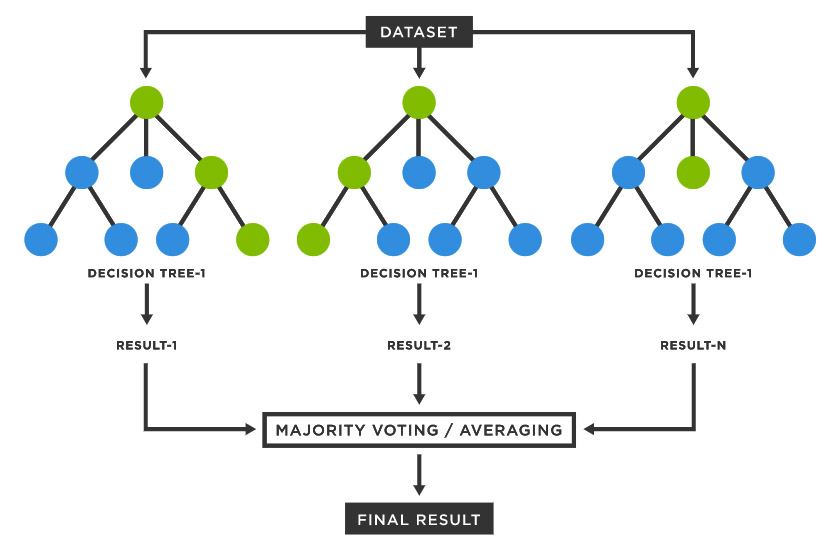
Linear regressions
Linear regression is a statistical method that models the relationship between two variables. It is helpful to make predictions about future outcomes based on past data.
Linear regression works very well in fields such as economics to predict future economic trends.

Neural networks
Finally, we have neural networks. Neural networks use algorithms to model complex relationships between variables. They are modeled after the structure and function of the human brain.
Neural networks make accurate predictions in fields such as finance and healthcare. Not for nothing are they considered one of the most advanced forms of predictive analytics. That is why they also require a lot of data and computing power to work correctly.
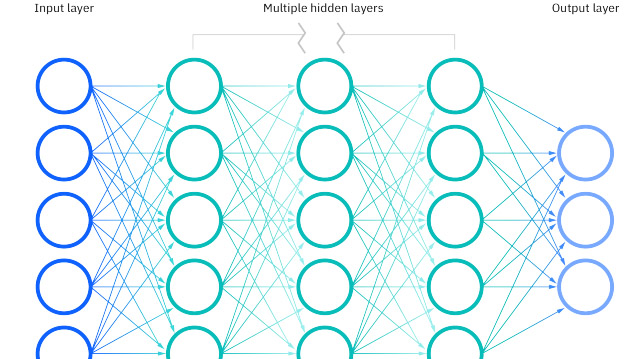
The relationship between Big Data and Predictive Analytics
Have you ever wondered how companies like Amazon and Netflix can personalize their recommendations for you? Well, this involves the synergy between Big Data with Predictive Models.
How do both concepts work together? Big Data refers to the immense amounts of data generated daily. Meanwhile, predictive analytics use all that data and make more precise estimations.
So what could be the winning formula? Get valuable insights from Big Data and employ the correct methods, tools, and technology.
Want to learn more about Big Data Analytics? Here is the most complete guide
The importance of Machine Learning in Predictive Analytics
To work correctly, predictive models needs the proper Machine Learning techniques. This allows data scientists need to extract valuable insights from the given data.
What is Machine Learning? ML is a subfield of Artificial Intelligence. It enables computer systems to learn from data, identify patterns, and make decisions without being explicitly programmed.
Note: Machine Learning algorithms improve as they receive more and better data sets. Then, predictive analytic models use these algorithms to build their estimations.
Want to learn more about Machine Learning? Read our full guide
Deep Learning: One of the most sophisticated ways of Predictive Analytics
Deep learning-based predictive analytics is a subfield of Machine Learning. It involves training artificial neural networks with large amounts of data to perform specific tasks.
These neural networks have the peculiarity of having the structure and function of the human brain. That is how they can recognize complex patterns and relationships in data.
How is Deep Learning being used right now?
Deep Learning is being used to estimate customer behavior, stock prices, sales trends, credit card fraud, customer churn prediction, and much more. It has the quality to identify hidden patterns and relationships that “traditional” predicitve models might miss.
What is the best part about Deep Learning?
Deep learning models are self-learning and can continually improve with new data. That is why it is becoming increasingly popular in businesses and organizations.
Some considerations
Of course, Deep Learning accuracy depends on the quality and quantity of data used to train the models. The more data the models have access to, the more accurate their predictions will be.
Conclusions about Predictive Analytics
Predictive data can be your secret ingredient to stay ahead of the competition, make informed decisions, and increase your market share. By analyzing historical data and identifying patterns, predictive models can help you anticipate future outcomes and develop data-driven strategies.
But you might be thinking, “Isn’t that a lot of work and too technical for me?” Well, the truth is that it has become more accessible and user-friendly in recent years, and its benefits can make a big difference.
Besides, it’s not just about data analysis but also about understanding what the data is telling you.
So, you may be wondering, where do I start? At PREDIK Data-Driven, we have experience in developing highly effective models. Our unique methodology allows you to take your sales, customer, and even social media data and turn them into valuable insights for your business.

